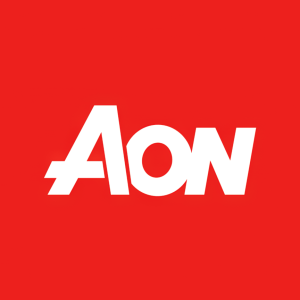CyberCube: Hidden Cyber Risk in US Property Market Could Lead to $12.5bn Losses, Says Report
The recent study by CyberCube, AM Best, and Aon highlights significant cyber risks in the US property insurance market, potentially leading to non-physical damage losses of $12.5bn. This magnitude of loss could impact the capital adequacy ratio of 18 US property insurers. The study analyzed 579 insurers, revealing that several experienced declines in their Best's Capital Adequacy Ratio (BCAR). Despite manageable current cyber risks, anticipated growth may challenge the industry's ability to manage exposures. Recommendations include clearer underwriting and pricing for cyber coverage.
- CyberCube's study provides compelling insights into managing cyber risks in the property insurance market.
- The findings may encourage better underwriting practices among insurers regarding cyber exposures.
- Potential losses of $12.5bn could lead to downgrades in financial strength ratings for some insurers.
- 12 carriers fell one level in BCAR, indicating escalating capital adequacy concerns.
- The anticipated growth in cyber exposures could overwhelm existing risk management strategies.
Insights
Analyzing...
According to a new study conducted by CyberCube, AM Best and Aon, sufficient cyber risk is accumulating in the US property market to trigger a one-in-100-year loss of
For the study, “Spotlight on Cyber: A study of aggregation risk in the US property insurance market”, leading cyber risk analytics expert CyberCube created a sample portfolio based on the US small business property industry and subjected it to modeled cyber loss scenarios, quantifying non-physical damage losses. The results of this analysis were then used by financial ratings agency AM Best to assess the impact on the balance sheets of 579 US property insurers. Aon assisted with quantifying the risks and exposures written back into property policies and highlighting some best practices for managing these risks.
The analysis revealed that of the 579 property insurers analysed, 12 carriers fell one level in the BCAR, four dropped two levels, and two insurers each fell three levels and four levels respectively. It is important to note that BCAR assessments are not the sole determinant of a company’s financial strength rating. Other factors such as reinsurance, diversification, and liquidity are considered to evaluate balance sheet strength. However, a significant deterioration in the BCAR assessment may lead to a downgrade of an insurer’s financial strength rating.
The report concludes that, while current levels of cyber exposure within US commercial property are manageable by the property industry as a whole, the exposure could have ratings impacts for a section of the property market. The large growth in cyber exposures anticipated over the next few years will challenge the industry’s ability to cope with rapidly increasing risks.
The research notes a mixture of regulatory pressure and good portfolio management practice is driving carriers to explicitly exclude (or affirm) cyber coverage from non-standalone policies, where “silent” cyber exposure may exist. However, it is becoming apparent that insurance carriers, while starting to offer explicit cyber coverage in US commercial property policies, may not typically be underwriting or pricing the risk accordingly. The report warns that cyber exposures in the US property market may be unaccounted for in carriers’ enterprise risk management strategies.
Sridhar Manyem, AM Best’s Director,
Cyber scenarios used by CyberCube to analyse the impact on the US property industry were large-scale data losses, large-scale ransomware attacks and a targeted ransomware attack on a medical devices manufacturer.
This report aims to quantify the cyber exposures accumulating in the US property market and calls for further clarification of cyber cover in commercial property policies, explicit underwriting and adequate pricing of the risks associated with cyber events in property policies.
Check out the report here: Spotlight on Cyber: A study of aggregation risk in the US property insurance market.
AM Best is hosting a webinar highlighting the findings of the report. Register here.
ENDS
About CyberCube
CyberCube delivers the world’s leading cyber risk analytics for the insurance industry. With best-in-class data access and advanced multi-disciplinary analytics, the company’s cloud-based platform helps insurance organizations make better decisions when placing insurance, underwriting cyber risk and managing cyber risk aggregation. CyberCube’s enterprise intelligence layer provides insights on millions of companies globally and includes modeling on thousands of points of technology failure.
The CyberCube platform was established in 2015 within Symantec and now operates as a standalone company exclusively focused on the insurance industry, with access to an unparalleled ecosystem of data partners and backing from
About Aon
About AM Best
AM Best is a global credit rating agency, news publisher and data analytics provider specializing in the insurance industry. Headquartered in
View source version on businesswire.com: https://www.businesswire.com/news/home/20211012005544/en/
yvettee@cybcube.com
Source: CyberCube







